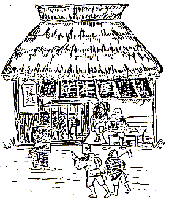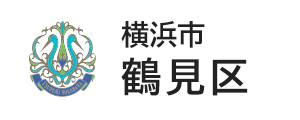- Yokohama-shi Top Page
- Tsurumi Ward Top Page
- Introduction of the ward
- Overview of Tsurumi Ward
- History of Tsurumi Ward
- 7th: Siebold and Bear Chaya
- 7th: Siebold and Kumachaya (Part 1)
Here's the text.
7th: Siebold and Kumachaya (Part 1)
Last Updated November 7, 2024
The story of Kumachaya seen in the Sekiguchi Diary

There were standing teahouses lined up along the highway of Ikumugi Village on the Tokaido, but it can be seen that all teahouses were devised and worked hard to attract customers. At the time of culture and Bunsei, there was a teahouse at Kumachaya Goemon, where the moon bear was tamed with and connected to the storefront in Kitamachi, Namamugi, the border between Tsurumi and Namamugi. In this teahouse, the female bear, which had been kept since around 1810, was a geisha, so it was popular and prosperous. Later, around 1824, he began to keep Shirakuma (Shiroko) at Chuzaemon in Namamugi and began to use it to attract customers at the store.
At that time, Siebold (1796-1866, German, doctor), who went to Edo in accordance with the Dutch trading director of Nagasaki in 1826, saw these two bears in Namamugi on the round trip, and wrote in his book "Edo Sanfu Weather" about Kumachaya bears as follows.
"On April 9, 1826 (Bunsei 9), I see a familiar bear. The head was small and sharp, with deep grooves along the top of the head, short nose, thin tip, and brown on both sides. This animal is 4 feet long, fat uncoatably fat, and has been caught at the age of 18 for 17 years. I was used to it and did a lot of tricks."
After that, Siebold returned to the Netherlands, but in the "Japanese Animal Magazine" published in 1833, he introduced the animals he saw in Japan and reported in detail the bears he saw in Ikumugi Village. This is said to be the first to introduce Japanese "bears" overseas. The following is a little longer sentence, but a part of it will be excerpted and written.
"Japanese Animal Magazine" written by Siebold
"The Tibet Bear (scientific name: Ralsus, Tipetanus)
This type of bear is very common in the mountains of India, and in China, but also in Japan. In Japan, it is called a bear or Tsukinshiba bear, which means a bear with a three-day moon-shaped spot (the bear of the moon). This bear is widely inhabited in the mountains of each island of this archipelago. The habits are almost the same as those of European bears. In other words, climb a tree and pull it in the hole he dug in the winter. The most common food is plant-based food, such as fruits and tree roots. When caught, they give sweet potatoes, boiled rice or other grains or starch fruits. Young bears are often found in cages or tied to chains, which are gentle and easy to handle until the age of three to four. However, after this period, they become relentless and have to let go of it. Japanese boxers perform art on these bears and offer them to see them in places where people gather.
Mr. Siebold visited the capital of the country and saw this kind of bear that was caught 18 years ago in the village of Ikumugi, which is close to Kawasaki, several miles from Edo. It was about 1 meter and 30 centimeters long, and some arts were made. Mr. Siebold also saw a pure white bear in Edo (Namamugi's error). It was a shirako captured in the northern part of Japan. The bear had pods of the beans and others as food. The Japanese prize the meat of this bear, and the skin is exported. Fats are used in various ways and sold high. The liver is used for medicinal purposes.
Since the museum does not have an individual of Ursus and Tibetanus (Tibet bears) from India that can be used for comparison, it cannot be determined that this bear in Japan is exactly the same as that of Indian bears. However, as far as the two stunning skins of this bear in Japan and their skull, there is no difference between what is described in relation to Tibetanus (Tibet Bear) in India. According to this comparison, it seemed to our eyes that there was no doubt at all that they were of the same species." (translated by Akio Okubo)
Inquiries to this page
Tsurumi Ward General Affairs Department Ward Administration Promotion Division
Telephone: 045-510-1680
Telephone: 045-510-1680
Fax: 045-510-1891
Email address: tr-kusei@city.yokohama.lg.jp
Page ID: 371-661-549













